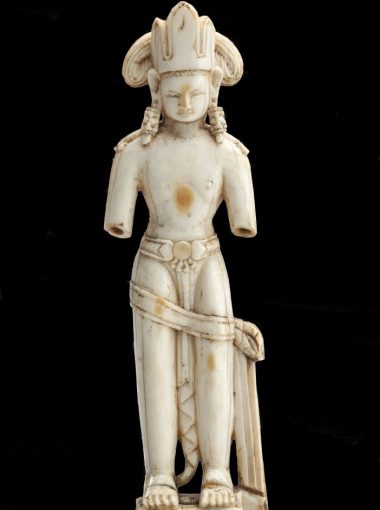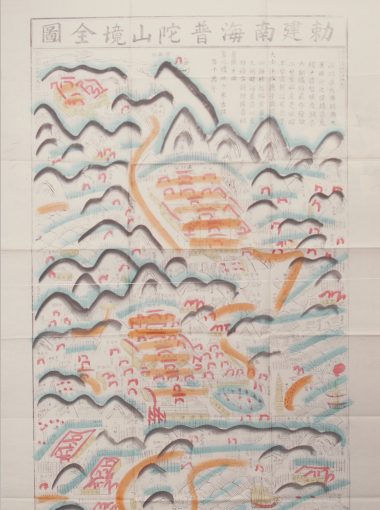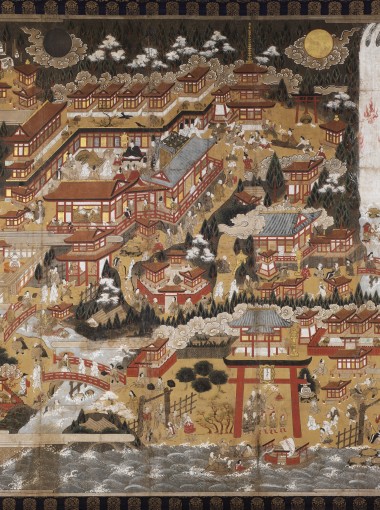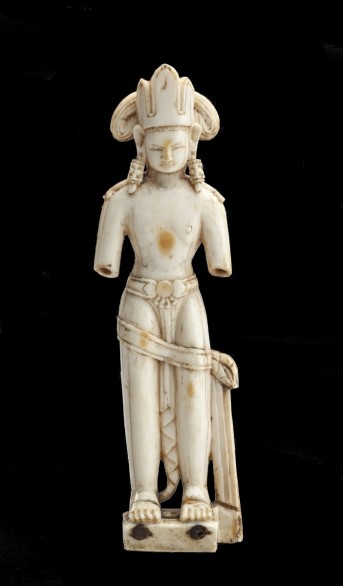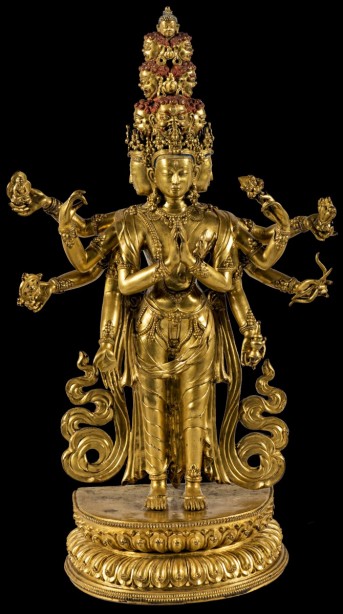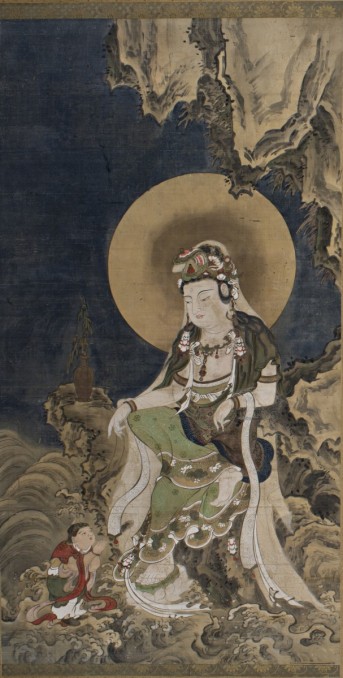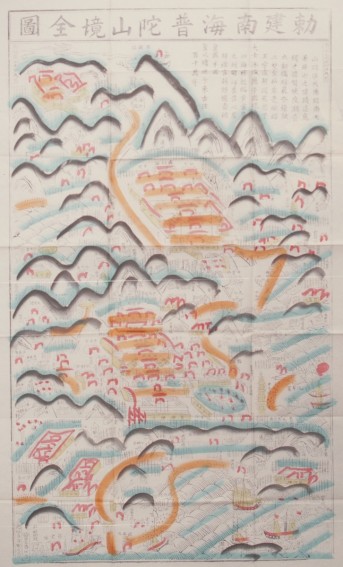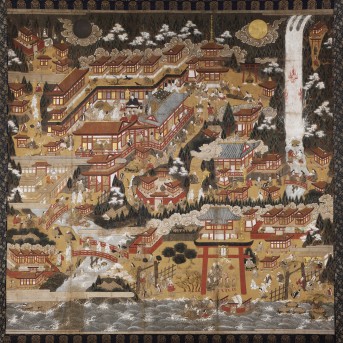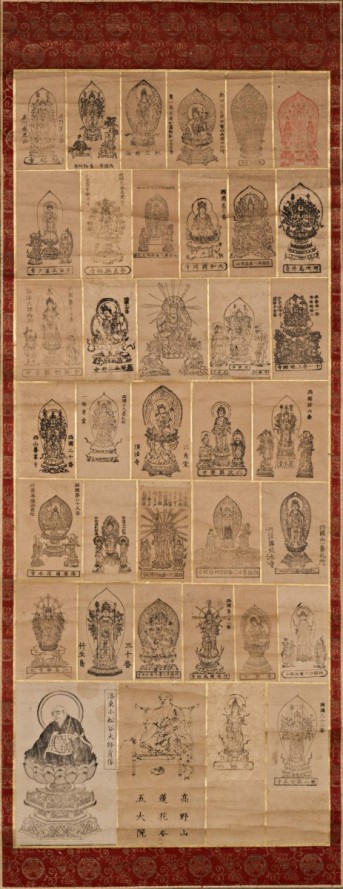Pilgrimage
In medieval India, Avalokiteshvara’s legendary island Potalaka represented the ultimate destination for seekers of the bodhisattva. As his worship spread throughout Asia, each country established its own locations for face-to-face encounters with the deity. The scrolls, map, and sculptures in this section relate to several of Avalokiteshvara’s most important pilgrimage sites: the Potala Palace and Jokhang Temple in Lhasa, Tibet; the Saigoku Pilgrimage route in Japan; and Guanyin’s most important center of worship in China, Mount Putuo island. Countless pilgrims seeking worldly and spiritual benefits over millennia have traveled to Avalokiteshvara’s sacred sites.
14. Phagpa Lokeshvara
Nepal, 16th–17th century; ivory; H. 5 1/2 in.; The Newark Museum, Purchase 1973 Wallace M. Scudder Bequest Fund, 73.130, photo: Robert Goodbody, Courtesy of The Newark Museum.
15. Eleven-headed Avalokiteshvara
Tibet or China, 17th–18th century; gilded bronze; 15 15/16 x 9 1/2 in.; Jacques Marchais Museum of Tibetan Art, 85.04.0160.
16. Kannon
Japan, Edo period, 1615–1868; hanging scroll, ink and color on silk; image: 61 7/8 x 33 in., mount: 87 7/8 x 39 1/2 in.; The Frances Lehman Loeb Art Center, Vassar College, Gift of Daniele Selby ’13, 2014.20.1.
17. The Complete Map of the Imperially Established South Sea Mount Putuo Area
China, Qing period, early 20th century; hand-colored woodblock print; 43 5/16 x 24 7/8 in.; Courtesy of the Division of Anthropology, American Museum of Natural History, ASIA/0578.
18. Nachi Pilgrimage Mandala
Japan, Edo period, 16th–early 17th century; hanging scroll, ink, colors, and gold leaf on paper, 59 x 59 1/2 in.; The Frances Lehman Loeb Art Center, Vassar College, Pratt Fund and Betsy Mudge Wilson, Class of 1956, Memorial Fund, Purchase, 2004.10.
19. Saigoku Pilgrimage Scroll
Japan, 19th century; ink stamps on paper mounted on silk; mounted prints: 36 x 14 5/8 in., overall including brocade and knobs: 58 1/2 x 22 3/4 in.; Private Collection.




